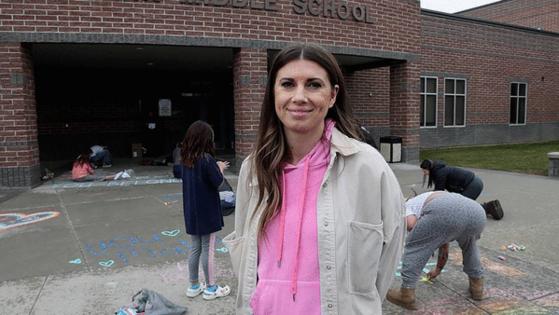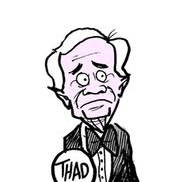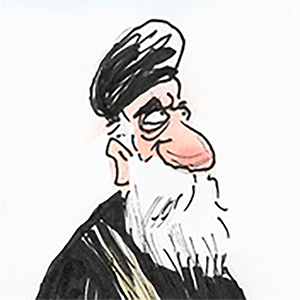Idaho school district said 'Everyone is welcome' classroom sign violated policy. Will the policy be reviewed?
Published in News & Features
BOISE, Idaho — It’s been three weeks since the West Ada School District made national news for ordering a Meridian teacher to remove signs containing welcoming messages from her classroom. While the district has showed no signs of reversing the decision, a West Ada spokesperson now says the district policy is “under review.”
Sarah Inama, a world civilization teacher at Lewis and Clark Middle School, said district administrators told her in February to take down two signs because they “don’t allow people to express differing opinions” and are “controversial in today’s political climate,” the Idaho Statesman reported. One sign says “Everyone is welcome here,” above hands with different skin tones, and another says, “In this room, everyone is welcome, important, accepted, respected, encouraged, valued,” with each word highlighted in a different color.
Since then, Inama, who has refused to remove the signs, has received an outpouring of support from Boise-area students, parents, teachers, and even other school districts. But West Ada administrators have also stood firm that the signs violate district policy on “content-neutral” classroom displays.
Now West Ada spokesperson Niki Scheppers says that policy is being “discussed” — as part of a larger policy review that’s been going on for 18 months. What exactly may come out of those discussions is not yet clear.
Scheppers told the Statesman that West Ada has not established a formal committee to review the classroom display policy, but that Superintendent Derek Bub “recently met with a group ... to engage in a discussion about Section 400 of district policy, which is currently under review.”
Section 400 of includes the display policy, or 401.20, as well as sections on staff conduct, acceptable use of technology and internet, alcohol and drugs, and “teaching controversial topics.”
“The purpose of the meeting was to gather insight, feedback, and input from a variety of perspectives to help inform any future considerations the Board of Trustees may review,” Scheppers said. The group included administrators, counselors, teachers, and members of the district’s teacher’s union, the West Ada Education Association, she said.
According to an internal memo circulated by the West Ada Education Association obtained by the Statesman, the association “strongly disagrees with the current implementation of policy 401.20.”
“The school environment is a place we all spend the majority of our days and we want it to be a positive and inclusive space for all,” the memo said.
West Ada policy on ‘neutral’ classrooms
Marcus Myers, the district’s chief academic officer, told Inama that her signs violated West Ada policy requiring signs be “content neutral and conducive to a positive learning environment,” as well as a 2021 Idaho law that inspired the policy, the Statesman previously reported.
The law barred state funds from going toward the teachings of critical race theory, an academic framework emphasizing slavery’s impact on society today.
In 2022, West Ada’s school board voted to add the requirement of content neutrality to its classroom-display policy, despite some pushback from the teacher’s union.
The policy lists signs allowed in classrooms, including the Idaho state flag, banners connected with student work and “motivational posters,” though the policy emphasized that teachers are not limited to what’s listed. It also said the district believes the American flag should be displayed in every classroom, the Statesman reported in 2022.
The policy lays out a process for handling complaints, allows district administrators to implement the policy and directs questions about it to the superintendent.
The goal of the policy was to protect teachers from parent complaints and remove “distractions” such as “political discourse from the classroom so that our teachers could focus on instruction,” Scheppers told the Statesman.
Concerns from Zachary Borman, president of teachers union, included the conflation of human rights issues with those “political in nature” and the clamping down on teachers’ self-expression. These concerns informed three rounds of revisions to the proposed policy before it was adopted.
‘Political climates change’
Myers and Scheppers have stated that the reason Inama’s “Everyone is welcome here” sign violated this policy was not because of its welcoming message, but rather its imagery: The hands with different skin tones. Scheppers told the Statesman that imagery “aligns with themes commonly associated with DEI initiatives,” in reference to diversity, equity and inclusion.
Though the policy has been in place since 2022, Scheppers said that the significance of certain imagery changes as “political climates change.”
“What it means to have different color hands open might have been something different when I was younger, and now they represent different political movements,” she said.
Still, the district’s application of its display policy in recent months has created some confusion. Inama’s signs, for example, have hung on the walls of her classroom without issue for four years.
In January, after an anonymous social media complaint was made over a bulletin board containing rainbow signs and welcoming messages at Seven Oaks Elementary School in Eagle, the bulletin board was swiftly removed, the Statesman reported. Then, a number of other rainbows signs were removed throughout the school, even ones without any inclusive messaging, Seven Oaks parents reported.
District to ‘discuss’ policy
Section 400 has been “under review” for 18 months, Scheppers said in an email. Stakeholders involved in the review include the union, legal counsel, Trustees David Binetti and Rene Ozuna, Chief Human Resources Officer Renee Senander, and Dave Roberts, who previously held Senander’s role.
Scheppers said the team meets weekly to review policy and hopes to complete the review of Section 400 by the 2025-26 school year. The goal, Scheppers said, is to ensure “all district policies are up-to-date, legally sound, and in full compliance with both Idaho Code and applicable federal regulations. Additionally, the review ensures alignment with best practices in human resources to support a consistent, fair, and legally compliant work environment for all staff.”
As part of this “broader conversation,” Scheppers said, Bub met with a group and “discussed Policy 401.20 and the potential for updates to the policy and its associated administrative regulation.”
Any potential policy updates to come out of this discussion would have to be reviewed by the school board, she said.
Binetti told the Statesman in a text message that “In accordance with Board Policy, I will not share details of committee discussions prior to a formal recommendation to the full Board.”
Ozuna did not respond to the Statesman’s request for comment.
Ozuna is the only trustee to have made a public statement on Inama’s sign, to the Statesman’s knowledge. In a March 19 Facebook post, Ozuna said that recent events surrounding the district’s call for the sign’s removal have left her “unsettled.” Ozuna went onto say that the post reflected her “personal thoughts,” not those of the board, but that she “requested a review on this decision and a discussion on the policy.”
“My hope is that we can come together for our kids, our neighbors, and our communities,” Ozuna said in the post. “I believe we can do better.”
Teacher’s union wants policy put on board agenda
The West Ada Education Association’s internal memo called on members to wear “Everyone is welcome here” T-shirts every Monday and to reach out to the school board asking that the display policy be put on the agenda for discussion at the next school board meeting. That meeting is scheduled for 6 p.m. Monday, April 14, at the district office at 1303 E. Central Drive in Meridian.
©2025 Idaho Statesman. Visit at idahostatesman.com. Distributed by Tribune Content Agency, LLC.










Comments